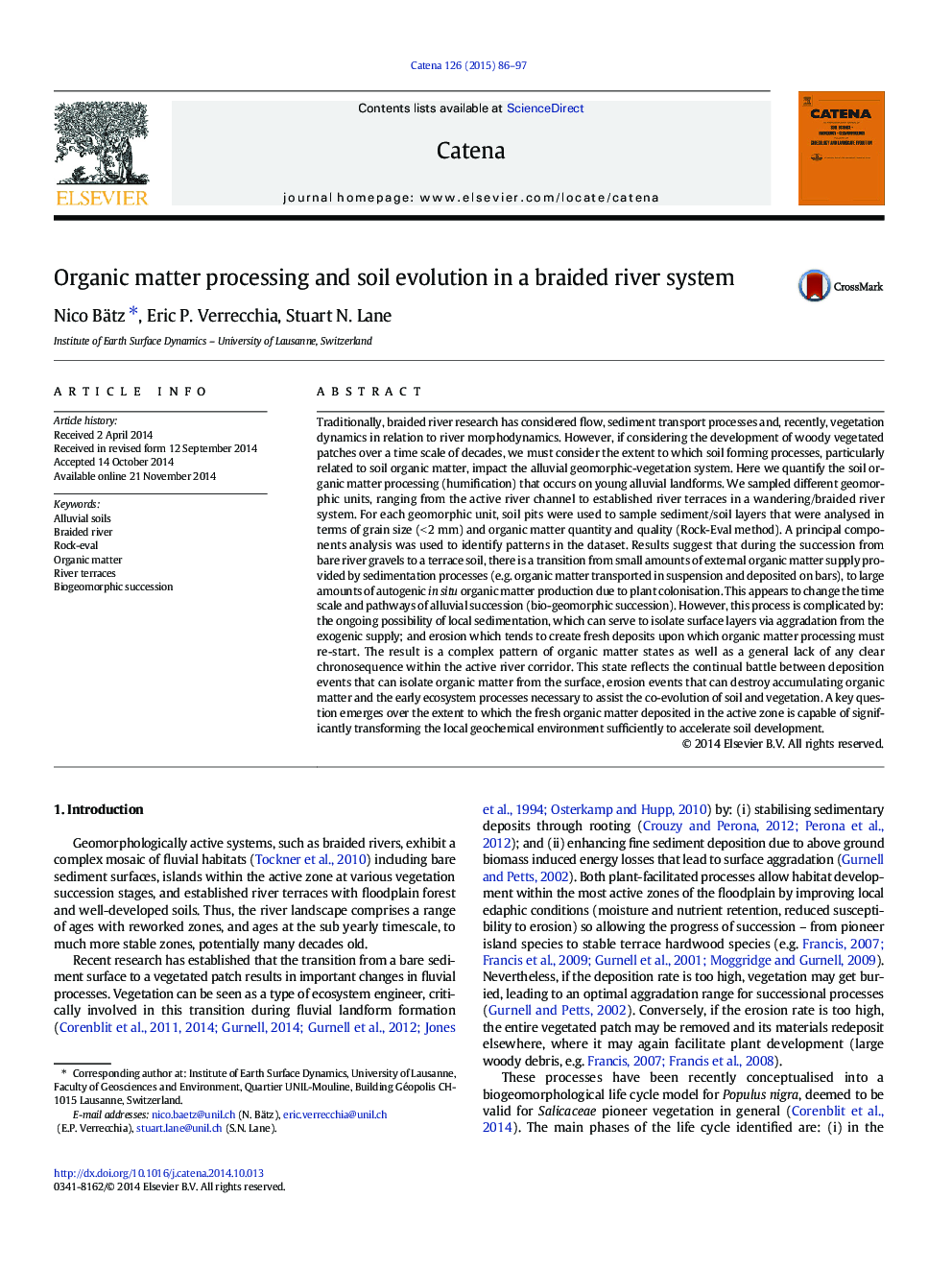| Article ID | Journal | Published Year | Pages | File Type |
|---|---|---|---|---|
| 4571379 | CATENA | 2015 | 12 Pages |
•Grain size and organic matter characteristics are key pedo-biogeomorphic variables;•Geomorphic processes can potentially add valuable resources to the young ecosystem;•Thus, geomorphic processes can hamper but also facilitate alluvial soil evolution;•Initial alluvial soils experience a transition from exogenic towards endogenic matter input.
Traditionally, braided river research has considered flow, sediment transport processes and, recently, vegetation dynamics in relation to river morphodynamics. However, if considering the development of woody vegetated patches over a time scale of decades, we must consider the extent to which soil forming processes, particularly related to soil organic matter, impact the alluvial geomorphic-vegetation system. Here we quantify the soil organic matter processing (humification) that occurs on young alluvial landforms. We sampled different geomorphic units, ranging from the active river channel to established river terraces in a wandering/braided river system. For each geomorphic unit, soil pits were used to sample sediment/soil layers that were analysed in terms of grain size (< 2 mm) and organic matter quantity and quality (Rock-Eval method). A principal components analysis was used to identify patterns in the dataset. Results suggest that during the succession from bare river gravels to a terrace soil, there is a transition from small amounts of external organic matter supply provided by sedimentation processes (e.g. organic matter transported in suspension and deposited on bars), to large amounts of autogenic in situ organic matter production due to plant colonisation. This appears to change the time scale and pathways of alluvial succession (bio-geomorphic succession). However, this process is complicated by: the ongoing possibility of local sedimentation, which can serve to isolate surface layers via aggradation from the exogenic supply; and erosion which tends to create fresh deposits upon which organic matter processing must re-start. The result is a complex pattern of organic matter states as well as a general lack of any clear chronosequence within the active river corridor. This state reflects the continual battle between deposition events that can isolate organic matter from the surface, erosion events that can destroy accumulating organic matter and the early ecosystem processes necessary to assist the co-evolution of soil and vegetation. A key question emerges over the extent to which the fresh organic matter deposited in the active zone is capable of significantly transforming the local geochemical environment sufficiently to accelerate soil development.
Graphical abstractFigure optionsDownload full-size imageDownload as PowerPoint slide
